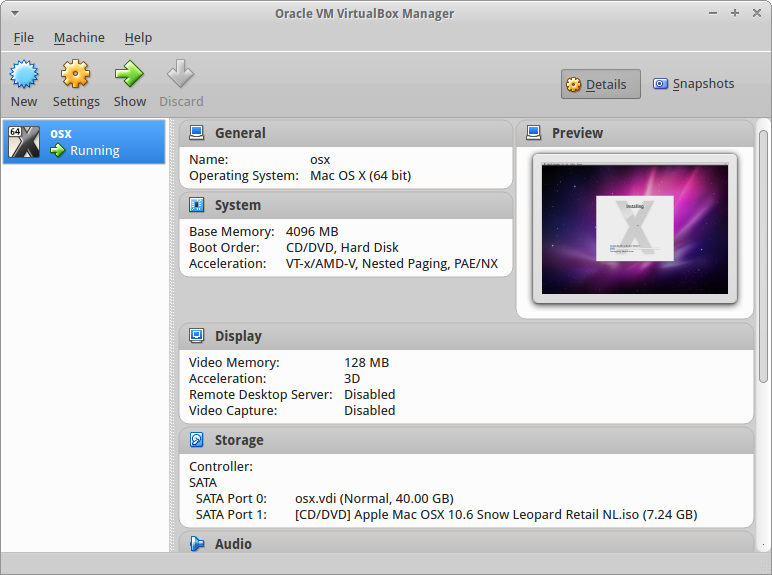

- #WINDOWS VIRTUALBOX MAC OS X HOW TO#
- #WINDOWS VIRTUALBOX MAC OS X FOR MAC OS X#
- #WINDOWS VIRTUALBOX MAC OS X MAC OS X#
I posted a detailed guide on my blog about how to create a Yosemite VM, feel free to check it out if you're interested.
#WINDOWS VIRTUALBOX MAC OS X MAC OS X#
Name this MacOS Mojave, and set it to Mac OS X (64-bit). Pop open Virtualbox, and Create a new Virtual Machine. Give your new virtual machine a name (I just called it Mac OS X) and set the operating system to Mac OS X Server (64-bit). Virtualbox has the option for a MacOS virtual machine in it’s New VM dialog, but we will need to make further adjustments to make it truly Mac-ready.

Graphics are still slow (and it's even worse in Yosemite) but besides the login screen which takes a good 5 seconds to render due to its transparency, everything else is pretty usable, and it's enough for occasional (hobby) iOS development until you get enough experience to make profitable apps in which case it's still better to buy a real Mac as this setup may break at any update. Start up VirtualBox and click the New button. An SSD is a must have though, a hard drive will be bloody slow (that's also true for a real Mac).
#WINDOWS VIRTUALBOX MAC OS X FOR MAC OS X#
See more like this: Download & Install MacOS High Sierra 10. Windows Mac Linux Popular Files FileForum Picks Security Center Codecs Follow Us: Twitter Facebook RSS Desktop Software Operating Systems VirtualBox for Mac OS X VirtualBox for Mac OS X 6.1.26-145957 for Mac by Oracle. Therefore, we will guide you, how can you install macOS High Sierra on VirtualBox free virtualization platform. I recommend assigning at least 2 GB (2000 MB) of RAM to.

Give your new virtual machine a name, and choose 'Mac OS X' for the OS Type. To create a virtual machine, open up Virtualbox and click 'New' on the upper left. In the end, with my solution I am able to successfully run Yosemite with 3,5GB of RAM (out of the 4GBs of my computer, and by tweaking the host system I could probably push it even more to 3,7GB), using the two cores of my CPU, with reliable USB pass through and no tweaking required (the emulated hardware is close enough to a real Mac that the OS boots directly without any kernel command line parameters or extra kexts). In fact, VirtualBox allows users to run nearly any operating system on a single machine and to freely switch between OS instances running simultaneously. Virtualbox lets you run Mac OSX within Windows by creating a virtual machine, which is a program that simulates a normal computer. What you can do (and I have done it with much success) is use a lightweight Linux installation as a base for QEMU which is a Virtualbox alternative, with much more configuration options, including the ability to emulate the Apple SMC and its "OSK" string (you won't need shady "hackintosh" kexts) and it has reliable USB pass through (I successfully restored iOS devices and installed apps on them). Virtualbox on Windows is definitely not suitable for this, as Windows itself is quite resource-hungry, Virtualbox lacks many configuration options and even if you can get it to work it's going to be quite unreliable, not to mention that you can't pass through USB devices.


 0 kommentar(er)
0 kommentar(er)
